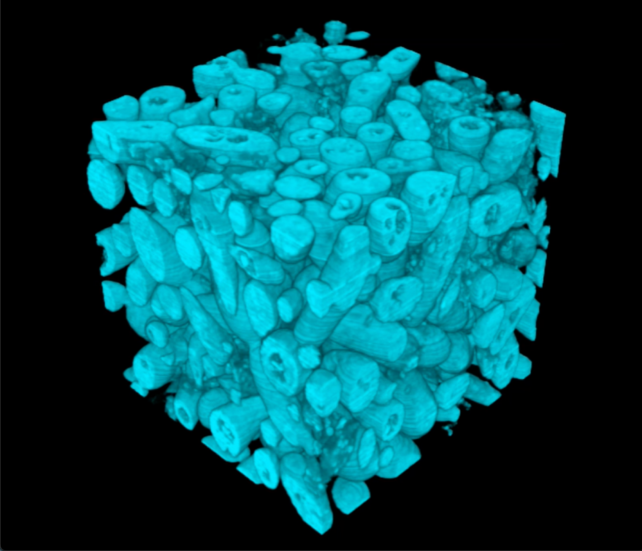What began in 2018 as a single cell invisible to the human eye has now evolved into a multicellular animal the size of a flea.
An ongoing study on a brewer’s yeast (SaccharomycesS cerevisiae) mutated to stick in clusters as “snowflake” yeast shows what can happen to microscopic unicellular organisms after thousands of generations of careful selection.
When researchers at the Georgia Institute of Technology selected, generation by generation, the largest and fastest growing yeast clusters from five populations, they cultured an organism that contained over half a million clonal cells — 20,000 times larger than its ancestor.
The results are an unprecedented example of sustained multicellular evolution.
“By putting our finger on the scale of the evolution of a unicellular organism, we can figure out how it evolved into increasingly complex and integrated multicellular organisms, and study that process along the way.” explained Evolutionary biologist William Ratcliff of Georgia Tech.
Today, indications of it that life on earth began about 3.5 billion years ago with single-celled organisms.
Still, little is known about how isolated cells, all of which looked and behaved alike, evolved into multicellular life forms with specialized tissues capable of coordinated activity about two to three billion years ago.
Experiments with snowflake yeast are now helping experts tell that story again.
The study is called the Multicellularity Long Term Evolution Experiment (MuLTEE) and the researchers hope to carry it out for decades to come. The first great insights came after 3,000 generations of evolution.
Right now, researchers say, Individual yeast populations have shifted from substances “weaker than gelatin” to those “with the strength and toughness of wood”.
“We discovered that there was an entirely new physical mechanism that allowed the groups to grow to this very, very large size.” explained Evolutionary biologist Ozan Bozdag.
First, in experiments, the yeast cells developed larger branches that reduced the overall density of the organism.
Then the branches tangled with each other, forming a cluster resembling the consistency of modern gels.
Ultimately, this new structure made the organism 10,000 times more resilient than its unicellular ancestor. Not such a snowflake anymore.

“The branches of the yeast were tangled” explained Bozdag: “The cluster cells developed a tendril-like behavior, wrapping themselves around each other and strengthening the entire structure.”
Another important result of the experiments concerned the role of oxygen in setting limits to evolutionary progress.
In the youth of the earth there was oxygen in short supply. Only a special kind of bacteriabreathed life‘ entered the atmosphere a few billion years ago, which is believed to have really established multicellular life forms.
The development of snowflake yeast in the laboratory supports the notion that oxygen was a significant obstacle to the first multicellular life forms on Earth. In experiments, only yeast populations that did not rely on oxygen for energy production could develop to such large sizes.
On the other hand, yeast clusters, which require oxygen, were forced to share supplies among all cells, incurring additional costs for growth.
These findings, scientists sayunderline “the crucial role of oxygen content in the development of multicellular size.”
“I’m really excited to have a model system in which we can evolve early multicellular life across thousands of generations while harnessing the incredible power of modern science.” says Ratcliff.
“In principle, we can understand everything that happens, from evolutionary cell biology to the biophysical traits that are directly subject to selection.”
It will be fascinating to see what happens to this yeast in the years to come.
The study was published in Nature.





